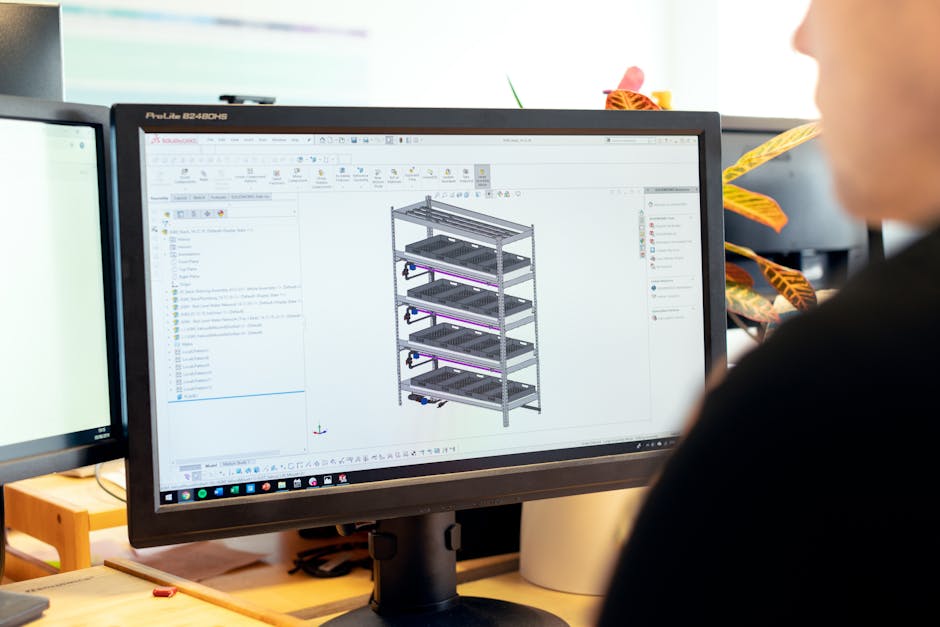How Our Custom Software Helps In Easy Transition From Legacy Cobol Systems
Are you ready to embark on a journey towards modernisation and efficiency? Let our custom software be your guiding light as you transition from your legacy COBOL systems. With our expertise, experience, and attention to detail, we are here to ensure a smooth and seamless transformation.
Like a skilled navigator, we will assess your current COBOL systems with precision and proficiency. We will identify any compatibility issues that may arise during the transition process, leaving no stone unturned. Armed with this knowledge, we will design a customised software solution tailored specifically to meet your unique needs.
But we won’t stop there. Our team of experts will guide you through the migration of data and functionality, ensuring that nothing is lost or compromised in the process. With meticulous testing and quality assurance measures in place, we guaranty that your new system will operate flawlessly.
And because we understand that change can be daunting, we provide comprehensive training and ongoing support to ease any concerns or challenges you may face along the way. Trust us to lead you into the future with confidence.
Let our custom software pave the way for a brighter tomorrow as you bid farewell to outdated practises and embrace innovation. Together, let’s transform your business for success in today’s fast-paced world.
Don’t hesitate to reach out to COBOL Migration Services if you have any questions or would like to discuss your legacy modernisation project without obligation.
Key Takeaways
- Custom software streamlines the process of assessing legacy COBOL systems by analysing risks, such as security vulnerabilities and compatibility challenges, and providing automated resolution suggestions.
- The custom software solution facilitates the migration of data and functionality with thorough analysis, data mapping, preservation of essential functionalities, and extensive validation and testing procedures.
- Automated testing plays a crucial role in ensuring the accuracy and accessibility of migrated data, with benefits including time savings, increased accuracy, quick feedback, enhanced test coverage, and improved reliability.
- Comprehensive training and ongoing support are provided to address technical aspects and provide effective training and support during and after the transition, minimising disruptions and empowering users to confidently use the custom software solution.
Assessing Your Legacy COBOL Systems

Assessing your legacy COBOL systems can be made easier with our custom software that streamlines the process. Our experienced and proficient team understands the complexities involved in transitioning from legacy COBOL systems to modern technology, and we’ve developed a software solution that simplifies this task for you.
One of the key features of our custom software is its ability to analyse risks associated with your legacy COBOL systems. It thoroughly assesses potential issues, such as security vulnerabilities, performance bottlenecks, and compatibility challenges that may arise during the transition process. By identifying these risks early on, you can proactively address them and minimise any potential disruptions or setbacks.
Our software also evaluates resources required for migrating from legacy COBOL systems. This includes assessing your existing infrastructure, hardware capabilities, and personnel skills. By understanding your available resources upfront, we can help you allocate them efficiently throughout the transition process. This ensures minimal downtime and maximum utilisation of your existing assets.
With our custom software, you gain an in-depth understanding of both the risks and resources associated with transitioning from legacy COBOL systems. Armed with this knowledge, you’re better equipped to make informed decisions moving forward.
Transitioning from legacy COBOL systems can be a complex endeavour fraught with compatibility challenges. In the subsequent section about identifying compatibility issues within your environment, we’ll delve deeper into this topic without missing a beat.
Identifying Compatibility Issues

Identifying compatibility issues can be a challenging task when transitioning from legacy COBOL systems, but don’t worry, our software is here to help. We understand that resolving compatibility conflicts and managing data dependencies are crucial steps in ensuring a smooth transition.
Our experienced team has developed a custom software solution that addresses these issues efficiently and effectively. Here are some ways our software helps you identify compatibility issues:
-
Compatibility analysis: Our software performs a comprehensive analysis of your legacy COBOL systems, identifying any potential conflicts with the target environment. It highlights areas where adjustments may be needed to ensure seamless integration.
-
Code scanning: With our software, you can scan your entire codebase quickly and accurately. It identifies any outdated or deprecated constructs that might cause compatibility issues in modern environments. This saves time by pinpointing specific areas that require attention.
-
Data dependency management: Our software understands the complex data dependencies within your legacy COBOL systems. It provides insights into how data flows through different modules and identifies potential bottlenecks or conflicts during the transition process.
-
Automated resolution suggestions: When compatibility conflicts arise, our software offers automated resolution suggestions based on industry best practises. These recommendations guide you towards making informed decisions and resolving conflicts efficiently.
By using our custom software solution, you can streamline the identification of compatibility issues during the transition from legacy COBOL systems.
In the next section, we will discuss how our expertise in designing customised solutions further enhances this process without interruption to your operations.
Designing a Customised Software Solution

Creating a tailored solution specifically designed to meet your unique needs and challenges is the key to ensuring a seamless transition from legacy COBOL systems. By designing a customised software solution, you can address compatibility issues and provide a smooth path forward for your organisation.
One of the major benefits of customisation is that it allows you to address specific pain points and improve efficiency. Instead of trying to fit your business processes into pre-existing software, you can have a system that’s built around your requirements. This not only streamlines operations but also minimises disruptions during the transition period.
Another advantage of customisation is that it enables you to incorporate user feedback into the development process. Your employees are the ones who’ll be using the new software on a daily basis, so their input is invaluable in creating an intuitive and user-friendly interface. By involving them in the design phase, you can ensure that the final product meets their needs and expectations.
In addition, customisation allows for flexibility as your business evolves. You can easily add or modify features as your requirements change over time. This adaptability ensures that your software remains relevant and useful in the long run.
As we move forward with migrating data and functionality, keep in mind that our customised solution will provide a solid foundation for this next step. With careful planning and attention to detail, we’ll ensure a smooth transition of both data and functionality from legacy COBOL systems to our modernised platform.
Migrating Data and Functionality

By migrating your data and functionality, you can seamlessly modernise your operations and unlock new opportunities for growth. Our custom software solution specialises in facilitating this migration process, ensuring that your valuable data is transferred accurately and efficiently.
Here are four key aspects of our approach to data migration:
-
Comprehensive Analysis: Before initiating the migration process, our experienced team conducts a thorough analysis of your legacy COBOL systems. This involves understanding the structure of your databases, identifying any dependencies or constraints, and determining the best approach for migrating the data.
-
Data Mapping: We meticulously map the data from your legacy systems to their corresponding fields in the new software solution. This ensures that all critical information is preserved during the transition, minimising any disruptions to your business processes.
-
Functionality Preservation: In addition to migrating the data, we focus on preserving the essential functionalities of your legacy COBOL systems within our custom software solution. Our team works closely with you to identify these functionalities and incorporate them into the new system, ensuring a smooth transition without compromising on productivity or efficiency.
-
Validation and Testing: Once the migration is complete, we conduct extensive validation and testing procedures to ensure that all migrated data is accurate and accessible within the new software environment. This meticulous attention to detail guarantees a seamless transition without any loss of vital information or functionality.
As we move forward into testing and quality assurance, rest assured that our custom software solution will undergo rigorous evaluations to ensure its reliability and effectiveness in catering to your specific needs.
Testing and Quality Assurance

Maximise the reliability and effectiveness of your migration process with thorough testing and quality assurance procedures. Testing plays a crucial role in ensuring that your custom software is functioning as expected and can seamlessly integrate with legacy Cobol systems. By implementing automated testing techniques, you can streamline the process and ensure comprehensive test coverage.
Automated testing allows you to execute repetitive tests quickly and accurately, saving time and effort. It ensures that all functionalities of the new software are thoroughly tested, reducing the risk of bugs or errors during the transition. With automated tests, you can simulate various scenarios and validate the behaviour of your custom software in different environments.
To achieve maximum test coverage, it is essential to have a well-defined testing strategy. This includes identifying critical functions, prioritising test cases based on their impact on business operations, and conducting both functional and non-functional tests. Functional tests verify that each component of your custom software is working correctly, while non-functional tests assess its performance under different loads or stress levels.
Table: Benefits of Automated Testing
| Benefits |
|---|
| Saves time |
| Increases accuracy |
| Enables quick feedback |
| Enhances test coverage |
| Improves reliability |
By focussing on thorough testing procedures and achieving high test coverage, you can ensure that your custom software will seamlessly integrate with legacy Cobol systems without any disruption to your business operations. The next section will discuss how training and support can further facilitate this seamless transition.
Training and Support for a Seamless Transition

Achieving a seamless transition without disruptions is made possible through comprehensive training and support, ensuring a smooth and effortless shift. Our custom software solution not only addresses the technical aspects of transitioning from legacy Cobol systems but also focuses on providing effective training and ongoing post-transition support to users.
To ensure training effectiveness, we follow a well-structured approach that includes the following steps:
-
Needs Assessment: Our team conducts a thorough analysis of your organisation’s requirements and identifies specific areas where training is needed. This helps us tailor our training programme to suit your unique needs.
-
Customised Training Materials: We develop customised training materials that are specifically designed for your organisation, taking into account your existing knowledge base and desired outcomes. This ensures that the training content is relevant, engaging, and easy to understand.
-
Hands-On Training Sessions: We offer hands-on training sessions where users can practise using the new software in a simulated environment. These sessions allow users to gain practical experience and build confidence in using the new system effectively.
-
Ongoing Support: Transitioning to a new system can be challenging, so we provide continuous support after the transition period. Our dedicated support team is available to address any questions or issues that may arise post-transition, ensuring a smooth transition process.
By providing comprehensive training and ongoing post-transition support, we aim to minimise disruptions during the transition period and ensure that users feel confident and empowered when using our custom software solution. With our expertise in Cobol systems migration, you can trust us to guide you through this process smoothly while minimising any potential risks or challenges along the way.
Frequently Asked Questions
What are the advantages of using a custom software solution for transitioning from legacy COBOL systems?
Using a custom software solution for transitioning from legacy COBOL systems offers several advantages. The importance of customisation allows for a seamless transition, increased efficiency, improved functionality, and the ability to adapt to specific business needs.
How long does the process of migrating data and functionality usually take?
Data migration timeline and challenges in transitioning vary based on the complexity of your legacy COBOL systems. It typically takes several months to a year to complete the process, ensuring thorough testing and seamless functionality transfer.
Can the custom software solution be integrated with other existing systems in the organisation?
Yes, our custom software solution seamlessly integrates with existing systems in your organisation. This integration allows for increased efficiency, improved communication, and optimised workflows, resulting in numerous benefits for your business operations.
What kind of training and support is provided to users during the transition process?
During the transition process, we provide comprehensive user training to ensure proficiency with our custom software. Our experienced technical support team is available to assist users with any issues or questions that may arise, ensuring a smooth and successful transition.
Are there any potential risks or challenges associated with implementing a custom software solution?
Potential risks and challenges may arise during the implementation of a custom software solution. These can include compatibility issues, data migration complexities, and resistance to change. However, our experienced team mitigates these risks through careful planning and thorough testing processes.
Conclusion
In conclusion, our custom software is the key to an effortless transition from your legacy COBOL systems. With our expertise and attention to detail, we assess your current systems, identify compatibility issues, and design a tailor-made solution that seamlessly migrates your data and functionality.
Our thorough testing and quality assurance ensure a flawless experience. We provide training and support throughout the process, guaranteeing a smooth transition like a well-oiled machine. Trust us to make your journey from legacy systems to modern technology as easy as slipping on a perfectly tailored suit.
If you’re interested in discussing your legacy modernisation project, please contact COBOL Migration Services – we’d be happy to discuss your needs without obligation.
Contact us to discuss our services now!
